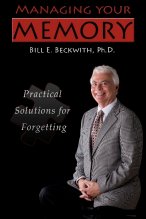There are No Magic Bullets for Preventing Alzheimer’s Disease but there is Hope (Part 1)
The New York Times (August 29, 2010) is running a series called “The Vanishing Mind” with the most recent installment titled “Years Latter; No Magic Bullet Against Alzheimer’s.” The article is based on the conclusions reached by a “jury” of 15 medical scientists along with scientists at Duke University with no vested interests in Alzheimer’s research. The National Institutes of Health convened this “court” to objectively evaluate the quality of research findings addressing the prevention of Alzheimer’s disease. These studies covered all of the bases: exercise, mental stimulation, healthy diet, social engagement, nutritional supplements, anti-inflammatory drugs, drugs lowering cholesterol, amount of education, being married, and being a loner.
The panel’s conclusion was that “Currently, no evidence of even moderate scientific quality exists to support the association of any modifiable factor with reduced risk of Alzheimer’s disease.” A week later a study that will appear in the journal Neurology concludes “A Rich Cognitive Life “Squares the Curve” of Decline Leading to Dementia.” The message here is that participating in an engaging and challenging activity (i.e., following your passion or exercising) allows you to resist the impact of Alzheimer’s for a longer time than being disengaged and unchallenged intellectually (i.e., having a more sedentary and passive life style). How can such opposite conclusions be reconciled?
First, consider the issue of “scientific quality” as judged by totally objective standards. The highest quality of evidence from a scientific point of view is that, for example, engagement and stimulation (the “use it or lose it” hypothesis) cause a later onset of symptoms of Alzheimer’s or prevents the disease from developing. The evidence that fits these criteria (i.e., high level of evidence) can only be found in longitudinal studies where participants are randomly assigned to treatment or control groups (no treatment and pseudotreatments) and followed over time. There are no studies meeting this very strict criterion, hence the gloomy outlook in the article. Indeed, such a study would require 30-50 years to provide a definitive answer for each variable of interest.
Instead, we have to rely on evidence from studies that do not meet this very strict standard. The existing studies are correlational studies that allow us to make associations between factors such as age of onset of Alzheimer’s disease and exercise but do not permit conclusive statements about cause and effect. But many of our current beliefs about health promotion and prevention are based on correlational studies. For example, the belief that cigarette smoking causes cancer is based on correlational studies. Do you want to be randomly assigned to a smoke or don’t smoke for 30 years to obtain the highest quality evidence for this belief? Being unable to find cause and effect relationships does not imply that interventions like mental stimulation and exercise do not influence the course of Alzheimer’s disease as the tone of the article seems to imply. You cannot make the strong assertion that something doesn’t work just because you can’t definitively say it works. Next week, the discussion will turn to the meaning of prevention and summarize a different take on the existing evidence.




